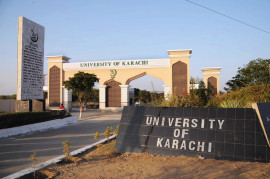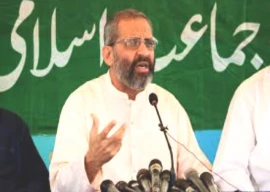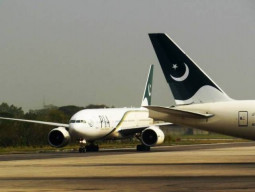
Even though head and neck cancer tops the list for the most common cancer in the country, most people do not seek help till they reach critical stages.
Displaying a picture of a back alley in Lahore, he said, most people buy and chew tobacco from a side stall. When symptoms of discomfort and pain start they simply go to the “clinics” right above the paan shop instead of seeking proper professional help. According to Zafar, the incidence rate in Pakistan and neighbouring countries such as India and Sri Lanka stands at 10 per 100,000. The main culprit for head and neck cancer is “chronic smoking, alcohol consumption, chewing tobacco, paan and ghutka”.
Switching gears to speak on reconstructive surgery after the cancer has spread and damaged the oral cavity, Zafar said, there are two main points to keep in mind: aesthetics and functionality. “The head and neck is a region of the body which is usually not covered by clothing and largely remain exposed and there must look as normal as possible,” he said. Then the doctor has to ensure the wound closes and heals, the person can swallow, the airway is protected and the person can speak.
Reconstruction ranges from the primary to skin graft to local flaps to myocutaneous flaps to the final step of free tissue flap which is now commonly used.
Other health issues
Also speaking on the occasion, Unicef’s Dr Laila Rizvi focused on the state of immunisation with specific reference to Sindh. “In terms of healthcare and facilities, Sindh is a tough province to tackle,” she said. Referring to the polio eradication campaign as a “litmus test” for Pakistan, she said, future international support was largely dependent on the initiative’s success.
Clearly distressed with the rise in polio cases in 2010, Rizvi said, other countries where polio remained a problem such as India, Afghanistan and Nigeria all marked a decline during the same time period.
In Sindh, according to a Unicef study, seven districts, including Karachi, Hyderbad and Jacobabad, are marked as high risk. Sindh did not meet the requirements for vaccinations as some healthcare providers did not even know what they are while others simply do not bother to find out.
A 2009 study by Unicef claims that three out of four mothers in the country thought just one vaccination was important while another 20 per cent had no idea on how many were required. The distance between healthcare units or access to healthcare workers needs to be revised. She also suggested proper training and a change in attitude of the hospital and clinic staff in treating parents especially from rural areas as well as keeping well stocked with the required vaccines at all times.
Published in The Express Tribune, February 26th, 2011.


















COMMENTS
Comments are moderated and generally will be posted if they are on-topic and not abusive.
For more information, please see our Comments FAQ